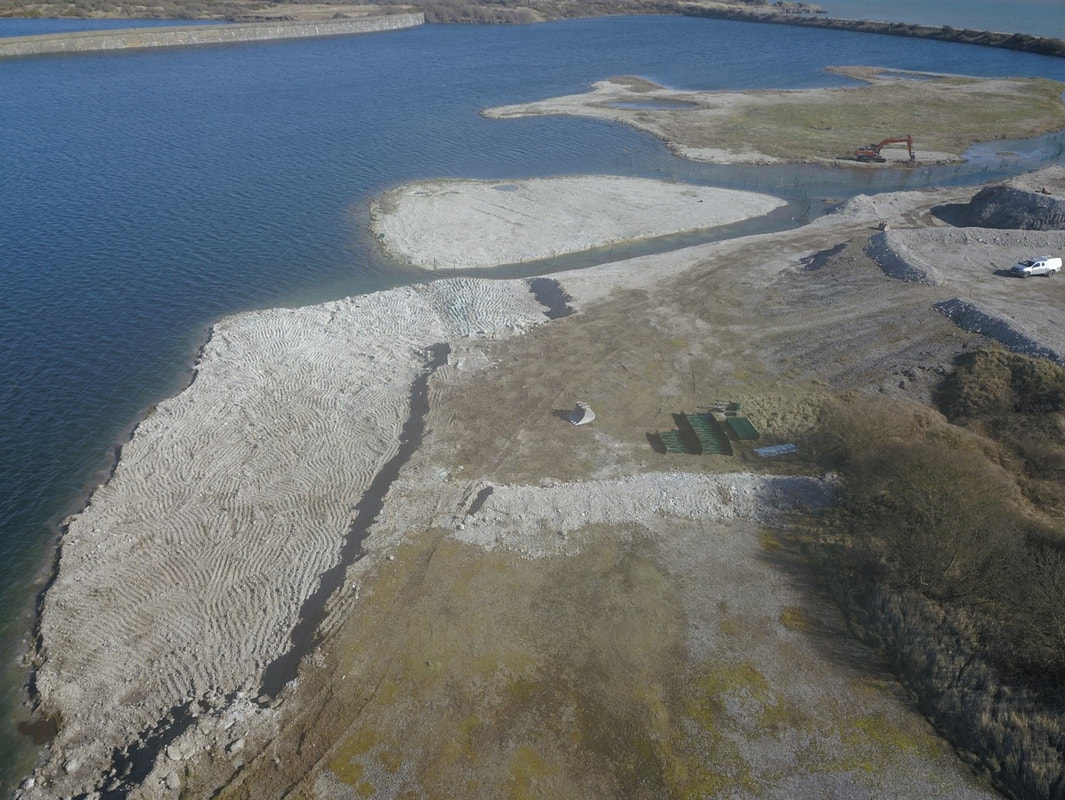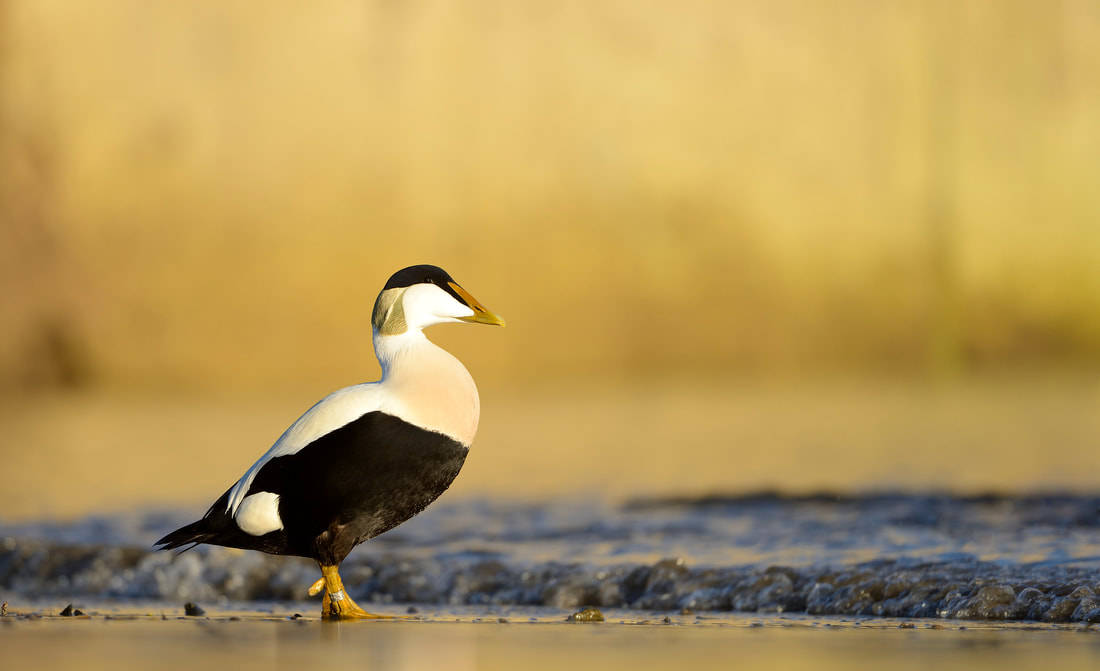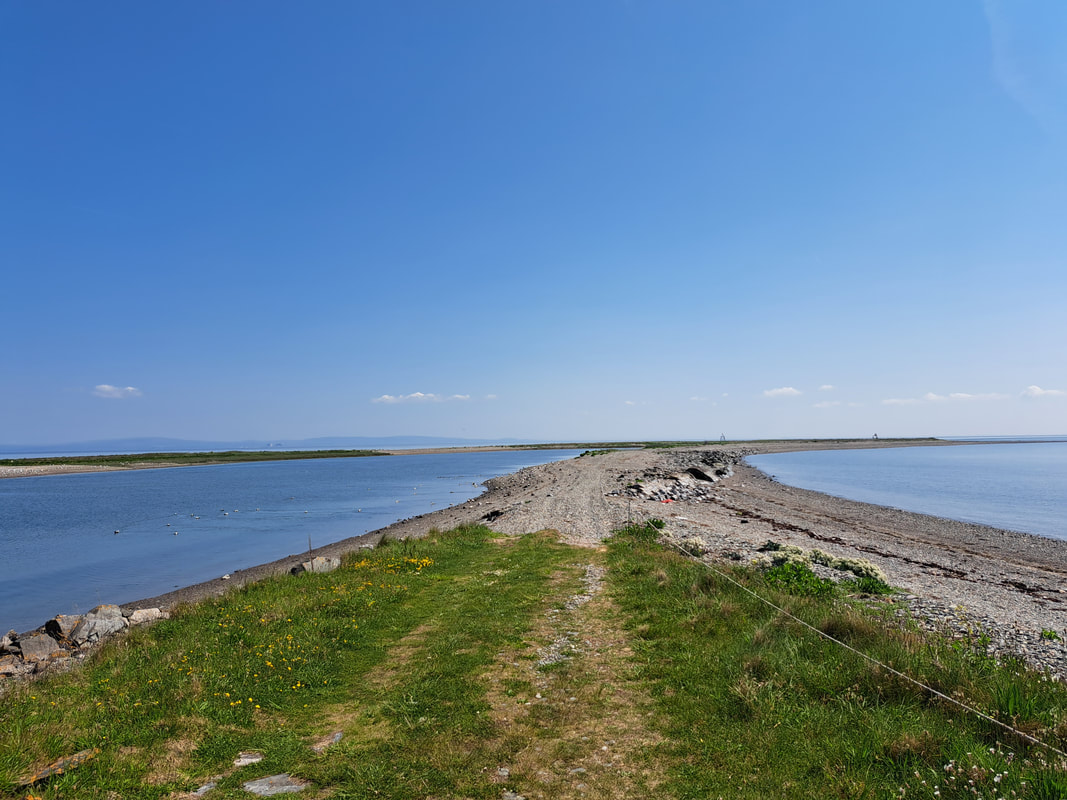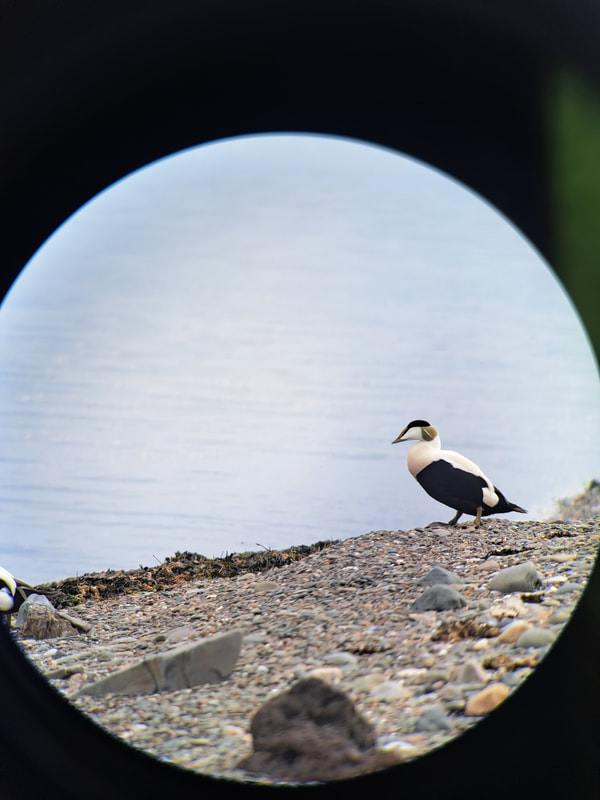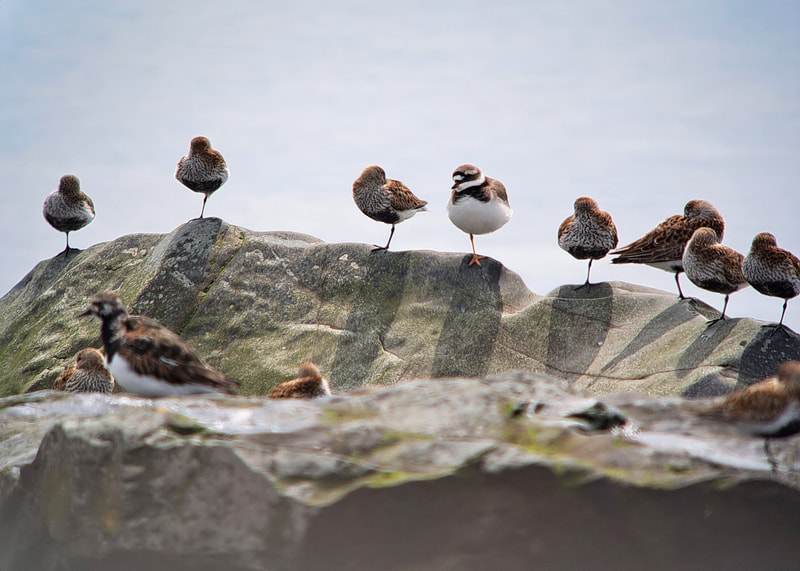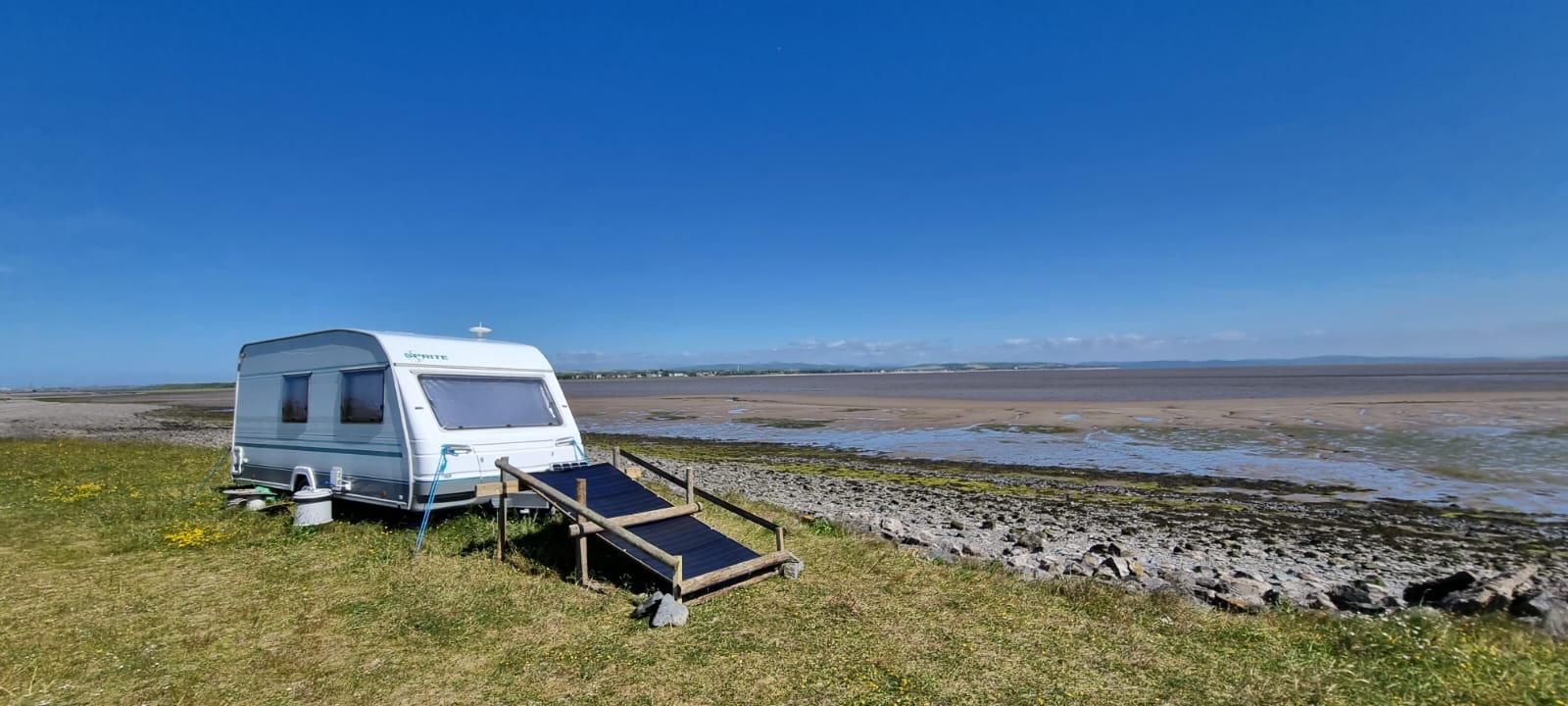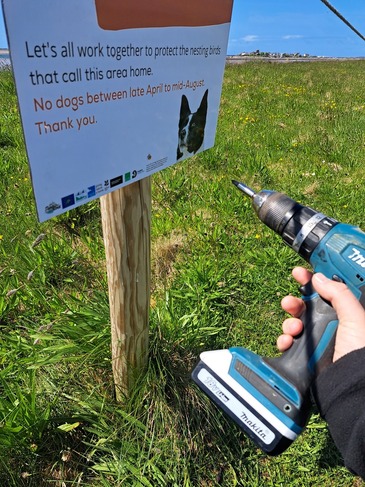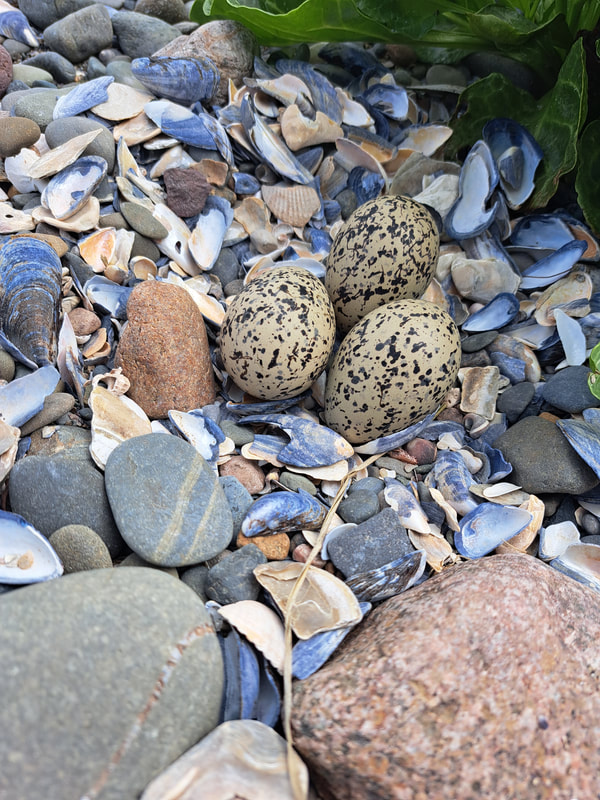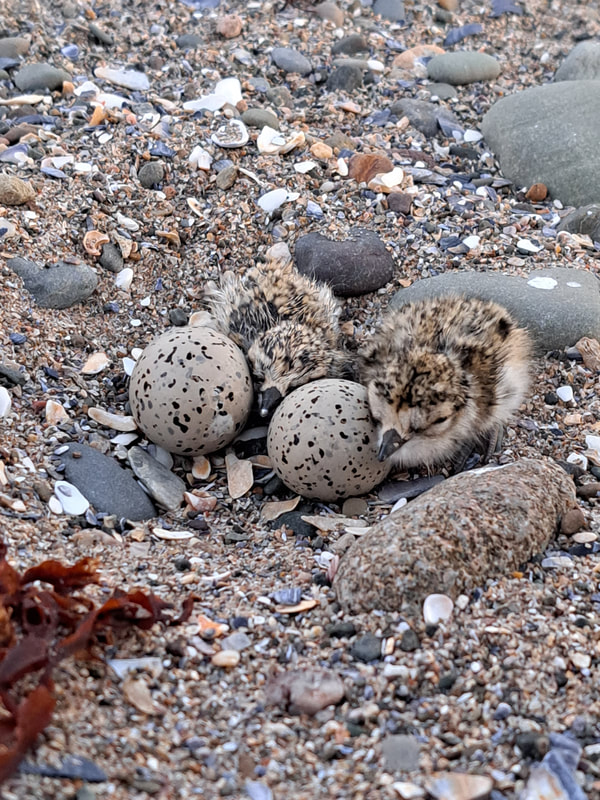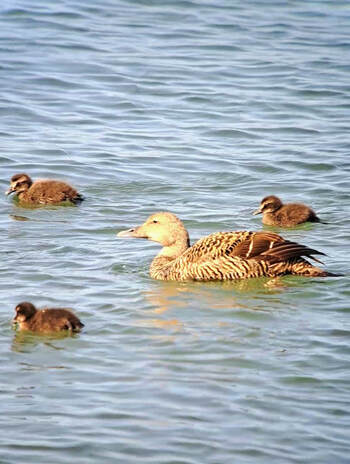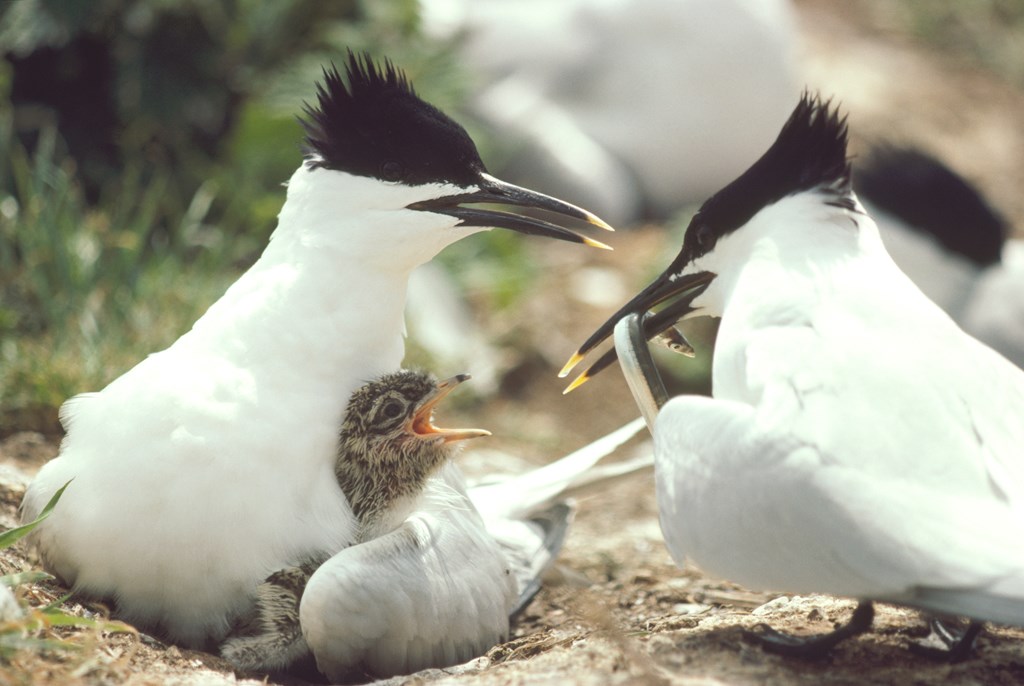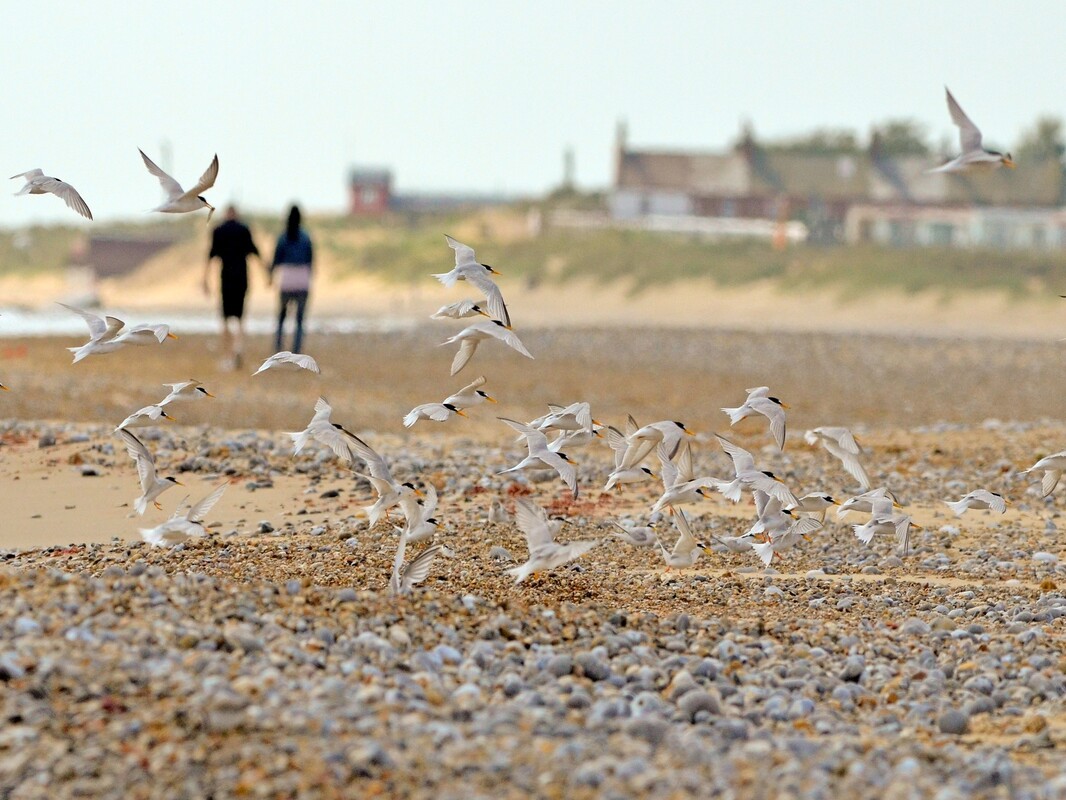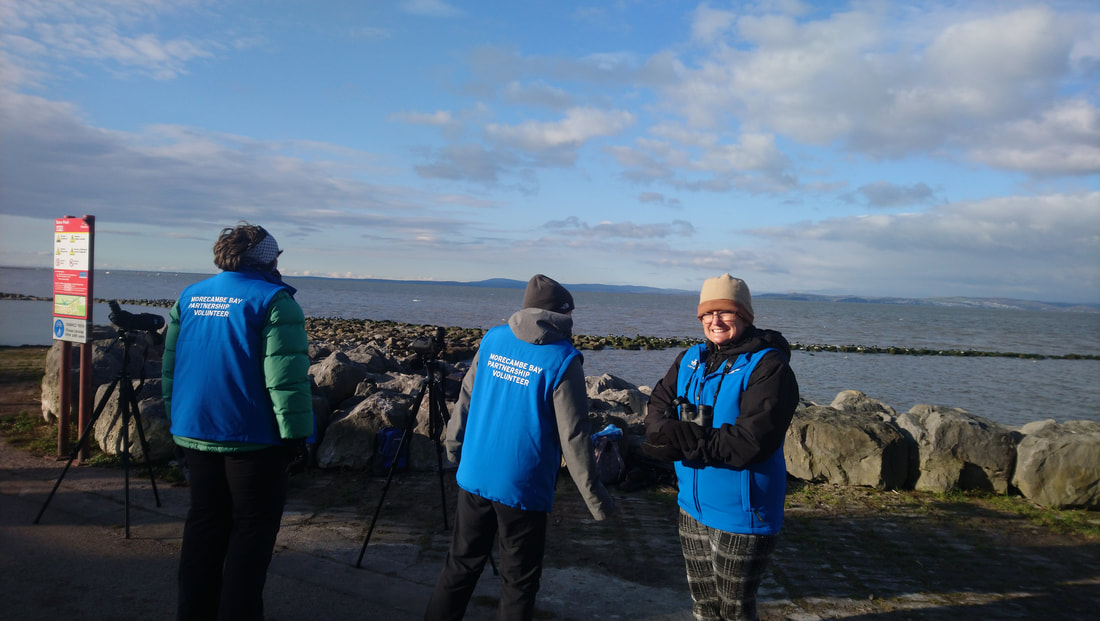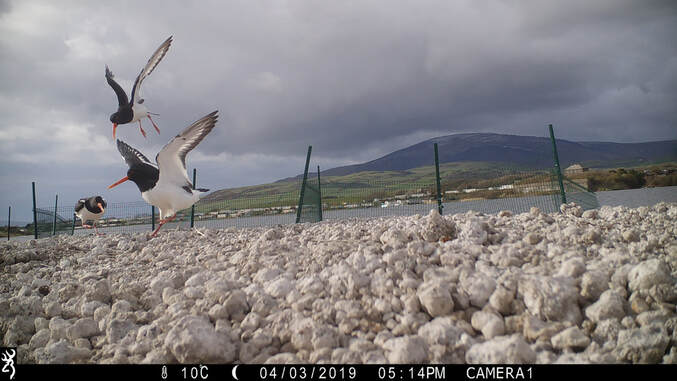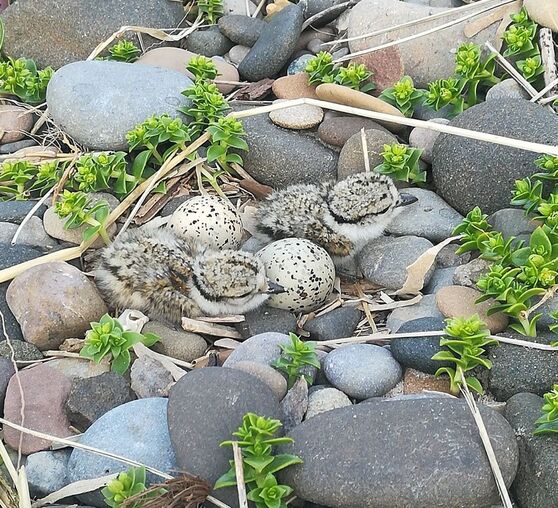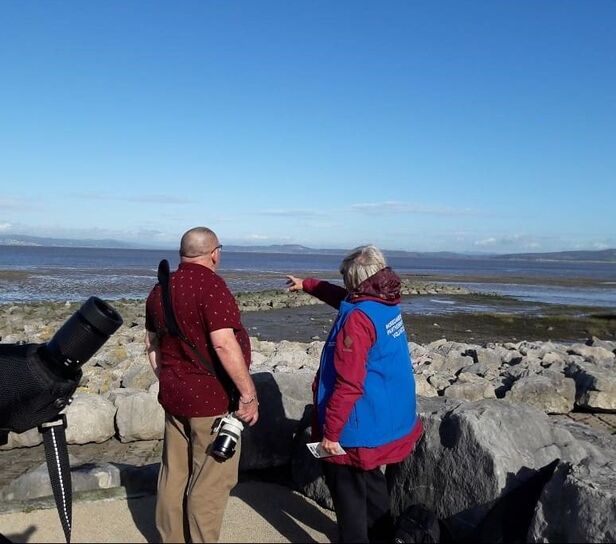|
Blog by Rebekah Watts, Shorebird Warden - South Walney, Cumbria Wildlife Trust Nesting Season Spring has finally arrived and with it, changes are occurring. Flowers are blossoming, days are lengthening and here at South Walney Nature Reserve, birds are carrying sticks and feathers and nests are popping up along our beaches which means that nesting season has begun. Nesting season is the most important time of year. The productivity of our birds is highly important and to assist them during this season, a lot of preparation is undergone during the Autumn and Winter months. Nesting Season Preparations Funding provided by ‘LIFE on the Edge’ (also known as LOTE) helps substantially at South Walney nature reserve when it comes to nesting season. LOTE is a Life Nature project which is lead by the RSPB and National Trust. This project aims to improve the quality of target coastal areas as well as providing recommendations for longer term coastal habitat management and/or creation, with focus on little tern, oystercatcher and ringed plover. LOTE have provided South Walney with equipment for electric fences such as solar panels and energisers, monitoring equipment such as trail cameras and thermal scopes and permanent hybrid fencing. LOTE also provides funding for a seasonal shorebird warden to work with the sole purpose of protecting coastal nesting birds. With the help of LOTE, we at South Walney are able to provide protection to nesting coastal birds throughout the season. Preparation for nesting season begins in late August / early September. At this time, we start checking our permanent fences for damage and repairing them. Debris is removed and the gates are shut to stop livestock from entering. Holes in the fence are repaired, wire is replaced and holes dug by predators into the fenced area are filled in. The area around the electric fence is cut back with a brush cutter to reduce interference with the wires. The inside of the fence is also brush cut to create the correct nesting habitat. The fence is now ready to be made live closer to the start of the season. During the nesting season, temporary electric fences and signs explaining what we are protecting are erected. Before this, the area around the perimeter of the fence is brush cut and litter picks are completed. During this season and the previous season, an area of land to past the boundary wall of the reserve to the north was fenced. This land was kindly temporarily loaned to South Walney Nature Reserve, as little terns choose this location to nest. The habitat is shingle and sand, close to the sea which is a perfect location for terns to nest and fish. To provide more habitat for nesting coastal birds, a tern raft is moved into place, floating in the pool of the oyster farm. The anchors are dropped, a camera is installed and the raft is ready for occupants. There is a permanently placed raft which is used by the same Oystercatcher pair each year. The parents are currently sitting on eggs there now! Chick shelters, nest cages and cameras are important to protect vulnerable chicks and adults from predators and extreme weather. Shelters of different shapes (for different chicks) are placed on the tern rafts, inside the fences and along the beaches to provide shelter and safety to chicks. Cameras are crucial for monitoring wildlife. They are placed directly on nests and at crossing points to catch predators. Cameras are placed out early in the season and checked regularly throughout the season. New to 2024 A new sound lure and hand-crafted little tern and herring gull decoys were created in 2024. In an attempt to attract a mixed gull colony of herring and lesser black backed gulls to nest in a new location, 10 adult and 6 juvenile herring gull decoys were created and placed in a temporary 8 strand fenced area. This fence was put in place at the start of the season with decoys and a trail camera, and has successfully attracted first year herring gull visitors since the addition of the decoy birds. We hope to see these gulls return next nesting season! To attract little tern, 40 little tern decoys were crafted and placed on the tern raft, in the temporary 12 strand fence to the north of the reserve and in the fenced area on Foulney island nature reserve. In combination with the decoys, a sound lure was created and is played on loop in the daylight hours. This has successfully attracted 12 pairs of little terns and we are hoping to see chicks in the next couple of weeks. Good Luck, Birds! Now that fences are live, decoys and sound lures are in place and cameras are being regularly checked, it’s up to the birds to raise their young. We wish them the best! Link to first South Walney blog by Bekka: LIFE at South Walney Photo credits: Rebekah Watts
0 Comments
Blog by Dave Blackledge - Site Manager, RSPB Cumbria Coast Reserves RSPB Hodbarrow, on the side of the Duddon Estuary in Cumberland, is the site of an important colony of Sandwich, Little and Common Terns. They breed on land formerly occupied by one of western Europe’s largest iron mines and began nesting there as the mines closed over 50 years ago. Predator fencing and warden protection has seen increasing numbers of seabirds breeding on the island created on limestone slag with vital protected space at a premium. The Life on the Edge project has been helping create more space for our colony to expand. At the start of the project in 2020, we constructed a new island and carried out work to increase the size of the existing one, giving us around 0.75 ha of extra breeding habitat, protected by anti-predator barrier fence. Work has continued this winter to further increase the opportunities for breeding seabirds by creating a third island of 0.25ha. and provide a line of marker buoys along our boundary with the neighbouring caravan park to reduce the incidence of boat disturbance near the islands. The coastal iron mines were enclosed by a seawall at the start of the 20th century to protect works from flooding and thousands of tons of limestone slag from the nearby smelting works were dumped within the wall, providing an ideal substrate for nesting terns when the works were flooded following closure in 1968. Island creation on site therefore centres around lowering, moving and cutting off areas of the slag bank to create disturbance free areas. This increased space has already begun to prove beneficial to a number of species. As terns, Black-headed Gulls and wildfowl began to increase behind the initial predator fence deployed in 2016, Little Terns in particular found it difficult to find space away from other species with their tendency to nest in a more dispersed pattern to other species. The first island created in 2020/21 has attracted most of the 60 or so pairs of common terns to breed creating space for little terns to expand. This season we have a peak of 53 pairs of little terns – a record for the site, and young are beginning to hatch at the time of writing. With HPAI hitting some Sandwich Tern colonies hard, we are delighted to have 596 pairs currently hatching young on site – a little down on recent years, but probably expected with a presumably reduced UK population this year. Creating several islands also has the advantages of reducing the chance of predation – any breach of the predator fence would only allow foxes access to one area of the colony – and separating the colony into areas where interaction and movement will be restricted which may help prevent the spread of HPAI throughout the entire site. Eiders too, have benefitted greatly from the works. With historical averages of around 5 nests, increased breeding space and predator fencing has increased this to 73 pairs, with several large creches seen escaping over the sea wall to the estuary in recent weeks. Along with 2 pairs of Arctic Terns, 12 pairs of Oystercatchers, 9 pairs of Lapwings and 4 pairs of Ringed Plover the busy breeding islands are proving a valuable haven for seabirds along the Cumbrian coast. Previous blogs on RSPB Hodbarrow
Part 1: NEW ISLANDS FOR SEABIRDS AT HODBARROW Part 2: DOING A GOOD 'TERN' Part 3: HODBARROW TERN TRENDS Part 4: 2022 HODBARROW SITE PREPARATIONS Blog by Rebekah Watts, Cumbria Wildlife Trust Foulney Island Warden Why is Foulney important? Foulney Island Nature Reserve is comprised of a shingle spit within Morecambe Bay SPA connected (via manmade causeway) to the mainland. The reserve is home to several wintering bird species such as knot, dunlin and wigeon and is an important breeding location in the spring and summer for shorebirds such little terns, Arctic terns, ringed plovers and oyster catchers as well as other bird species such as pied wagtails, meadow pipits, eiders and skylarks. The terns that choose Foulney as their nesting grounds are protected species and they are in decline. It is so important to offer them a safe place to lay their eggs and raise their chicks as they are easily disturbed by human recreational activities, dogs, aerial and ground predators (such as sparrowhawks and foxes). Their nests are vulnerable as they nest where there are no visual obstructions to allow them to watch for predators but this means that they nest out in the open, making their chicks and eggs susceptible to predation. Their eggs are at risk of being trampled by people, as their camouflage is very successful. Terns nest on shingle and require close access to the sea to feed. That’s what makes Foulney the perfect place for them. Terns return to the same colony to breed in most cases and Arctic tern travel 22,000 miles on their migration. This special little island hosts these incredible birds and it needs to be protected. Breeding Season Preparation Preparation for breeding season on Foulney Island is an intense operation! For this year, the main island was turf stripped to provide extra habitat for shore nesting birds. This new shingle area was fenced off to protect the birds using it to raise their young, from ground predators such as foxes, rats and hedgehogs. Turf stripping involves the removal of the top layer of vegetation and in this case, changing the habitat to shingle. The vegetation was then buried beneath the layer of shingle. This area has been used this season by eiders, ringed plovers and oyster catchers who’s chicks began hatching recently, proving the success of the change in habitat! Skylarks and meadow pipits also benefited from the ground predator protection in this area as they too nested here, inside the fence on the edge of the shingle where vegetation remains. In preparation for the electric fence the vegetation was strimmed. Insulator stakes were knocked into the ground and electric wires passed through the insulators. To prepare the public, signs were put up in the carpark, the causeway and on the island stating that dogs are not allowed and explaining why, and the rope fence to fence off the beach area, where the birds nest, was put up. Lastly, the caravan was put in place. Then it was time to begin surveying! Warden life on Foulney Hi! I’m Bekka, and I’m this year’s seasonal warden on Foulney island nature reserve. This beautiful little island reserve is home to many species of breeding birds over the summer including oystercatchers, ringed plovers, eider ducks and little terns. In addition to the birds, the island is home to and visited by mammals such as grey seals and voles; as well as insects such as butterflies and moths. Sharing an island with such beautiful wildlife is an amazing experience. Being the only person living on an island might seem lonely, but I have plenty of fishermen to chat to, and of course the wildlife! During the season I have been lucky enough to experience finding nests and watching parents lovingly incubate their eggs, and have watched eggs hatch into beautiful chicks. Watching eider females with crèches of up to 30 ducklings swimming across the water and oyster catcher parents leading their chicks across the shingle are sights that will never get old. As the warden, I spend my time monitoring eggs, chicks and adults, checking trail cameras and engaging with and educating the public. Explaining to the pubic the importance of reducing disturbance to nesting birds is an extremely vital part of my job. The natural threat response in nesting shorebirds is triggered by the public and their recreational activities, especially when dogs are involved. When threatened, shorebirds are forced to flee, leaving eggs and chicks vulnerable to predation, and forcing the adult bird to expend energy which should be used in incubation or finding food. In the worst case, an out of control dog can kill shorebirds, which unfortunately occurred on Foulney this season. It is so important that our shorebirds are protected. We all have our part to play! Now that chicks are hatching we are well into the season. Fingers crossed that all goes well here on Foulney island! Blog by Leigh Lock, RSPB Project Development Manager The global and national threats to seabirds are widely recognised and much focus understandably links the status of seabirds with the state of our seas which is where most seabirds spend most of their time. But what about the state of the ‘land’ where seabirds spend the breeding season – a critical phase of their lifecycle? As a land-based observer of birds on the coast for decades, the growing pressure on breeding seabird sites has been a major concern and I feel we have reached a tipping point where if we don’t act now there will be no safe nesting space left for seabirds in some areas in the future. Therefore, I was excited by the prospect of Seabird Conservation Strategies being developed within all four UK counties by government – each will set out the strategic needs of our seabird species and set out a route map for their recovery. This process in England has been led by DEFRA and NE. But I wanted to make sure that the current state of seabird colonies in England was reflected in this process and that the thoughts and concerns of those most close to the sites – the site managers, conservation officers etc responsible for these areas– were captured. So I contacted as many of those key people around the coast as possible to gather views on pressures impacting on seabird colonies. This is probably the first time such an assessment has been made. Much of this information gathered was necessarily subjective, being based on the opinions of the site managers, and others. However, expert judgement provided by the site managers most familiar with the sites, and their issues, constitutes the best available evidence on issues affecting England’s breeding seabirds. The process does present a ‘ground truthing’ to compare with other available data sources so that all the available information together can be used as ‘weight of evidence’ to identify the main issues and develop solutions to them. Working closely with colleagues within NE, we then looked to align this rather broad-brush assessment of pressures on colonies with other data sources being carried out to inform other areas of the strategy. Information was gathered on 222 natural sites (i.e., excluding urban gulls) and covering 24 seabird species – this representing the vast majority of England’s seabirds. Pressures were assigned to predefined categories including disturbance, habitat loss, predation, invasive species, disease, and control. Note that the assessments were carried out before the widespread and serious impacts of Avian Influenza (AI) were recorded in England in 2022. Overall, the most widespread was disturbance (see below), with both habitat loss and predation impacting on over 50% of the sites. The other pressures were recorded at far less sites, although their impacts at individual sites could be very significant (e.g., invasive species on islands). There are plenty of discussion points emerging from this but below I have pulled out just three. 1. The widespread impacts of disturbance Disturbance is the most widely reported pressure affecting England’s breeding seabirds impacting on 89% of the coastal sites, all sites supporting species like little tern and Sandwich tern, and 100% of English SPAs with breeding seabird features. Site managers see disturbance as THE rapidly growing issue, and human recreational disturbance at coastal sites is predicted to increase. Disturbance of nesting seabirds is caused by a range of recreational activities – beachgoers, dogwalkers and recreational fishers on land, and recreational watercraft such as jet skis, paddleboarders from the sea. Although disturbance is particularly an issue for ground-nesting birds such as terns and gulls at soft coast sites, I was also surprised how widely it was reported at cliff colonies and even offshore islands where birds vulnerable to disturbance from the sea. Disturbance at nest sites can have significant negative impacts on seabird breeding success through increased exposure of eggs and young to predation and the elements and can lead to the abandonment of nest sites and even entire colonies. What I see are overstretched, under resourced conservation organisations trying to manage coastal sites where nature conservation should be the priority, but recreational interests prevail. Many areas have wardens to ‘protect’ nesting birds and engage with the public. But without zonation policies and legislation to restrict certain activities, on-site teams of staff and volunteers face an uphill battle, and the birds using these sites face a bleak future. 2. Sea level rise and coastal erosion present an existential threat to some of England’s most important seabird colonies. Within England, most seabird sites occur on ‘soft coast’ sites – nearshore islands, salt marshes, lagoon islands and shingle banks. These habitats are under massive pressure and the reduction in size and quality of nesting habitat is the second most widespread pressure in England. Without intervention, 2,000 Ha of protected coastal habitats is predicted to be lost in England by 2060 with even greater areas being functionally lost as breeding habitat due to regular flooding. Previously, these losses were mainly from development and land claim, but the key future threats to coastal habitats are from climate change-related sea level rise, coastal erosion, and coastal squeeze. Mean sea levels in the UK have already risen by approximately 17 cm since the start of the 20th century and climate predictions show that they will continue to rise under all emissions scenarios until at least the year 2100. Increases in sea level rise are difficult to predict but are likely to be greatest in southern and eastern England where some of the largest colonies are. Rising sea levels mean that more coastal seabird breeding habitat will be lost, and the risk of intermittent flooding of nest sites is also increased. In addition to mean sea level rise, the risks of extreme sea levels and flooding are compounded by increases in storm events. Species that nest on the ground in sand and shingle habitats, such as terns and gulls, are particularly at risk, as large areas of these types of habitats can be lost rapidly with only minor increases in sea level. Many current breeding sites for terns and gulls on beaches and low-lying near-shore islands which are likely to become unsuitable or be lost entirely within the next 10 years. Little terns are particularly at risk because they tend to nest just above the high-water mark and in recent years high proportions of the UK’s little tern nests have been flooded out during spring tides and storm surges. Short term fixes are in place at many sites. Habitat management to keep sites open, recharge of shingle islands to raise their levels above highest tides but longer-term measures are required to ensure that seabirds have safe nesting sites for future decades not just the next few years. This involves factoring seabird breeding habitat into multi-stakeholder strategic management planning eg Shoreline Management Plans (SMPs), Nature Recovery Networks (NRNs), Local Nature Recovery Strategies (LNRS)) and the implementation of the government’s 25-year Environment Plan. Breeding seabirds should be considered in full as part of these overarching plans and programmes, to ensure that existing breeding sites are adequately managed, and new breeding habitat is created and maintained, and linked to funding streams like Biodiversity Net Gain. 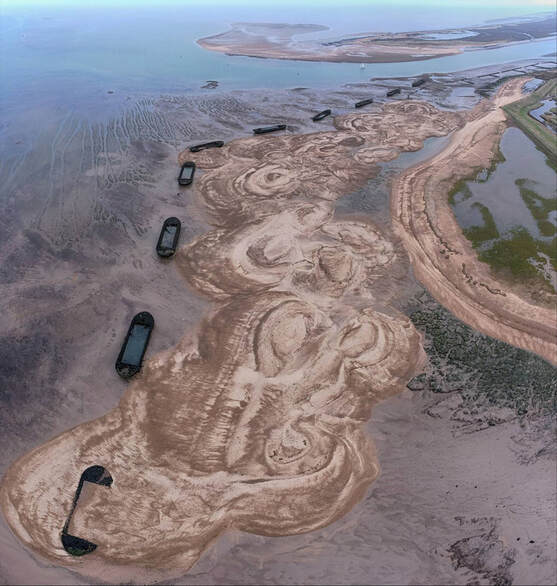 Beneficial use of dredged sediment can be used more widely to provide habitat for nesting seabirds and provide natural sea defences – here 50,000 cubic metres of sediment delivered through @ProjectLOTE working with Harwich Haven Authority, EA and the landowner supports the most important little tern colony in Essex (c) JPullen 3. Avian Influenza and the in-combination effects.
As mentioned above, the assessment was carried out last year before the impacts of AI were recorded in England this summer. Disease was not noted as a significant pressure and has not really impacted on seabirds since botulism on gulls in the past. But the impacts of AI in 2022 have been severe – impacting significantly on the largest UK and England colonies of both roseate and sandwich terns – Coquet and Scolt Head Islands respectively -with 1000s of dead breeding adults and large-scale breeding failure at these colonies. we await a full assessment of the impact of AI on seabirds in 2022 and how it might impact in the future. But think of the conditions under which AI was able to make such an impact. The ‘in combination’ effects of habitat loss, predation, disturbance have pushed seabirds to the edge – habitat loss squeezing seabirds into fewer and fewer suitable areas, which then become honey pots for predators, and even these few special sites coming under the unbearable pressure of disturbance. All our eggs in fewer and fewer baskets. And then a disease comes along which thrives in conditions where it can spread rapidly amongst individuals in closely packed colonies. To have seabird populations that can be resilient to AI and other diseases, we need more space for them to nest safely, allowing more colonies to thrive, and allowing more mobility from site to site to respond to changes in local conditions. Building resilience to disease and other pressures, requires spreading the risk – more and bigger sites, better managed. For this we need to rethink how our coast is managed. The report The full report is on the documents page of this website. Lock, L., Donato, B., Jones, R., Macleod-Nolan, C. 2022 England’s breeding seabirds: A review of the status of their breeding sites and suggested measures for their recovery. RSPB and Natural England report. The report highlights the most important sites and actions for the recovery of seabirds in England. The recommendations from this report on site management have been incorporated into a wider set of recommendations covering the full suite of seabird ecology -under four categories -breeding, feeding, surviving and knowledge. These recommendations have been made by NE to DEFRA to inform the further development of the England Seabird Conservation Strategy and the implementation of the 25 Year Plan. The Strategy should be available early in 2023. Through ProjectLOTE we will continue to advocate for these changes and work with stakeholders all-round the coast to deliver what we can to help seabirds. Final thoughts There are probably few more committed and enthusiastic workers than those managing seabird colonies and they are doing a brilliant job holding the line against growing pressures from all directions. But they need help. For all the above reasons, the England Seabird Conservation Strategy couldn’t come at a better time, and we must all hope that it brings a step change in the priority and resources allocated to management of seabird colonies in England. Over to you DEFRA. Thanks to all those who contributed information towards this assessment. Good luck to all of you with your challenges ahead. Blog by Amy Hopley, Morecambe Bay Partnership Nature and Wildlife Officer Amy here from Morecambe Bay Partnership, and I’m delighted to be writing this month’s guest blog on coastal volunteers. We love our volunteers – without them, much of the work we do would be impossible! And whether it’s chatting about birds or cleaning beaches; bracken bashing or planting trees, volunteering is a fun and rewarding way to get involved with your local community and help projects you care about make a real impact. Without them, charities such as Morecambe Bay Partnership and the RSPB would be unable to do most of what they do. How will volunteers help Life on the Edge? Life on the Edge is a project which will have a strong emphasis on volunteers. The project seeks to raise awareness of the threats faced by our wonderful shore-nesting birds. Here in Morecambe Bay, rare breeding species such as ringed plover and little tern, and much loved iconic species like the oystercatcher and the herring gull, are failing year after year to successfully raise their young. Shore-nesting birds are exceptionally vulnerable to not only the effects of climate change and coastal erosion, but also to human disturbance. Increased leisure time, better access to the coast and the increased popularity of the stay-cation all mean that our beaches are becoming busier than ever. As our popular beaches become too crowded, visitors seek out quieter, more secluded shores to enjoy the peace. However these quieter shores are already occupied, by small and almost invisible birds that need space and peace to raise their young. The quieter beaches are becoming busier, and the number of safe places for our coastal bird species to nest are running out. Those still attempting to nest on busy beaches see their nests accidentally destroyed, or disturbance causes them to abandon their nests, eggs or chicks. But nests are tremendously difficult to spot – even for an experienced bird watcher, let alone a visitor just having fun at the beach. So how can we protect our nesting birds when they can’t be seen? That’s where our volunteers come in! First, we need to find and protect these precious nests. Volunteer surveyors will visit sites regularly to identify the areas where birds are nesting on beaches. Once found, the nest will be protected by friendly engagement volunteers who chat to visitors and explain that there are birds raising their families nearby, asking people to make small changes their routes to avoid disturbing the birds. This allows visitors to ask questions about the birds, and may even give them the opportunity to spot the birds in question with the help of a knowledgeable volunteer! A friendly face has a far better impact than a sign, and a positive experience with a volunteer is a far more memorable experience for the visitor. How can I get involved? Right now, Life on the Edge is currently looking for volunteers to help protect the endangered birds raising their families on the few remaining UK shores where they can still nest in peace. There are a range of ways you can get involved! Here at Morecambe Bay Partnership we are currently looking for volunteers to:
With the help of a knowledgeable, passionate and friendly volunteer team, we can change the future of our vulnerable nesting birds from its current steady decline, to one of stability and growth. Not only that, but we can ensure a safe future for the birds beyond the life of the project by inspiring and educating local people to care for the special wildlife on their shore. How do I get in touch?
You can email [email protected] to enquire about any of the roles above. You can also chat to us online at @BirdsoftheBay on Twitter, or by searching for Morecambe Bay Partnership on Facebook or Instagram and following our pages! There are also opportunities on RSPB reserves in the south and east of England too! Find out how to get involved here: https://www.rspb.org.uk/get-involved/volunteering-fundraising/volunteer/ Or you can enquire through the LIFE on the Edge website: https://www.projectlote.life/ |
Archives
April 2024
Categories
All
Photo credits: Oystercatcher by Katie Nethercoat (rspb-images.com)
LOTE Logo credits: Saskia Wischnewski |










